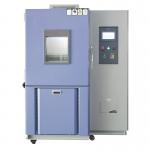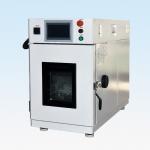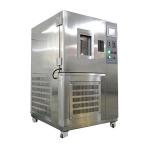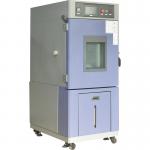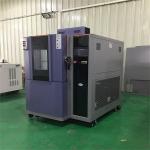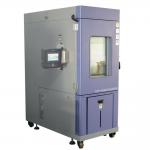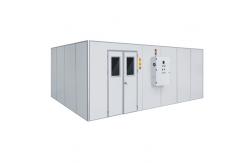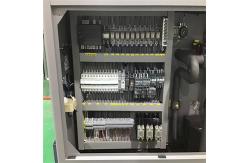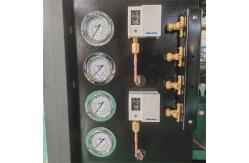In the modern era of product development and quality assurance,
understanding how materials and products age under various
environmental conditions is of paramount importance. The
Multilingual Accelerated Weathering Test Chamber, also known as the
Environmental Simulation Aging Test Machine, emerges as a powerful
tool that revolutionizes the way we evaluate the durability and
performance of a wide range of items. This state-of-the-art testing equipment is designed to replicate
the harsh effects of natural weathering and environmental aging in
a controlled laboratory setting. It serves industries such as
automotive, construction, coatings, plastics, and textiles. The
primary objective is to subject samples to accelerated conditions
of sunlight, temperature, humidity, and rainfall, allowing
manufacturers and researchers to predict the long-term behavior and
durability of their products in a fraction of the time it would
take under real-world conditions. By doing so, it enables informed
decisions regarding material selection, product design, and quality
control, ultimately enhancing customer satisfaction and market
competitiveness. - Versatile and Multilingual Control Interface
- The test chamber is equipped with a user-friendly control panel
that supports multiple languages. This feature makes it accessible
to a global user base, eliminating language barriers and
facilitating seamless operation. Operators can easily set and
adjust test parameters, such as UV intensity, temperature, humidity
levels, and cycling times, regardless of their native language. The
interface also provides real-time monitoring and display of test
conditions, ensuring accurate and reliable testing.
- Advanced Solar Simulation System
- It incorporates a high-intensity xenon arc lamp or other reliable
light sources that closely mimic the spectral distribution of
natural sunlight. The light intensity can be precisely controlled
and adjusted to simulate different geographical locations and
weather conditions. This allows for the accurate replication of the
photo-oxidative and thermal degradation processes that occur in
outdoor environments. The solar simulation system is also designed
to ensure uniform light distribution across the testing area,
guaranteeing consistent exposure of samples.
- Precision Temperature and Humidity Control
- The chamber features a sophisticated temperature and humidity
control system. It can maintain a wide temperature range, from
-20°C to +80°C, with an accuracy of ±1°C. The humidity control
range extends from 10% to 95% relative humidity, with an accuracy
of ±3% RH. The system utilizes advanced refrigeration units,
electric heaters, humidifiers, and dehumidifiers to create and
maintain the desired environmental conditions. Temperature and
humidity sensors are strategically placed within the chamber to
provide real-time feedback, enabling rapid and accurate
adjustments.
- Realistic Rainfall and Condensation Simulation
- To mimic the effects of rain and moisture condensation, the chamber
is equipped with a programmable rainfall system. It can produce
varying intensities and durations of rainfall, replicating
everything from light drizzles to heavy downpours. Additionally,
the chamber is designed to simulate condensation, which is a common
phenomenon in many outdoor applications. This comprehensive
moisture simulation helps evaluate the water resistance and
durability of products, especially those used in exterior
applications.
- Durable and Insulated Chamber Construction
- The chamber is constructed with a heavy-duty steel frame and
high-quality insulation materials. The steel frame provides
excellent rigidity and stability, ensuring the integrity of the
chamber during long-term testing. The insulation materials minimize
heat transfer and maintain a stable internal environment, reducing
energy consumption and enhancing the accuracy of temperature and
humidity control. The interior of the chamber is made of
non-reactive and corrosion-resistant materials to prevent any
interaction with the test samples.
- UV Intensity Range
- The chamber can generate a UV intensity range from 0.3 W/m² to 1.2
W/m² at 340 nm. This adjustable UV intensity allows for the
simulation of different sunlight exposure levels, from mild to
extreme. For example, products intended for use in tropical regions
with high UV radiation can be tested at higher intensities, while
those for temperate climates can be evaluated at lower intensities.
- Temperature Cycling Rate
- The temperature can be cycled at a rate of up to 5°C per minute.
This rapid temperature change capability is crucial for simulating
the thermal stress that products experience during daily and
seasonal temperature fluctuations. It helps identify potential
weaknesses in materials and products, such as cracking, warping, or
delamination due to thermal expan
|
